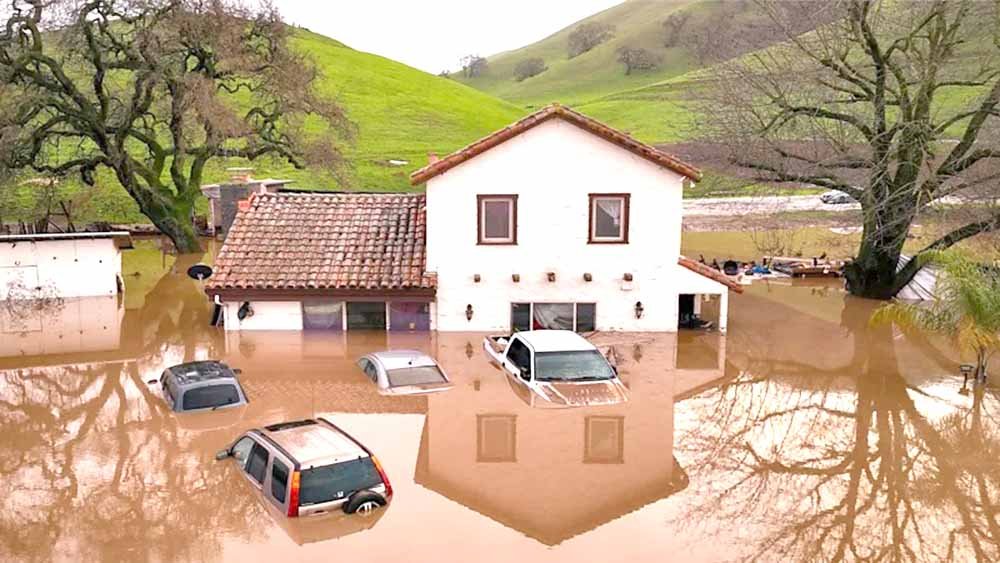When floods hit, getting clear, timely warnings out to people becomes lifesaving, but too often these messages fail. The BBC asks disaster experts about how to get it right.
In the Texan town of South Bend, people used to mark on a concrete pillar where floodwaters had reached in the past, disaster communications expert Keri Stephens recalls.
“It served as a reminder that water has been this high before. These visual warnings and community memories are very powerful,” says Stephens, a professor at the University of Texas in Austin. Now, she says, the watermarks have faded.
Alerting people about floods in time for them to act plays a critical role in saving lives and evacuating communities. Of course, warnings are only one part of protecting people from disasters: weather forecasting, long-term resilience measures and emergency responses are also incredibly important. But getting the messaging right about the risks and what to do is a crucial part of the puzzle. Sometimes all it takes is a shift in focus, says Stephens who has found that some people are more likely to respond to a call to protect their car than themselves.
With climate change making floods more frequent and intense, the BBC looks at what it takes to get these messages right, and save lives in the process.
The challenge of getting the right messaging can be particularly difficult for floods. “We’re not taught in schools about responding to floods,” says Stephens. “In the US, it is common to have ‘stop, drop and roll’ drills for fires, but we don’t have drills for flood warnings.”
Research testing warning messages shows they are most effective if they include several critical components: a clear description of the hazard, information about the specific location, and concrete guidance on how and when to act. They also must come from what is seen as a credible source.
The key thing, Stephens adds, is for warnings to tell people whether they should evacuate or stay where they are. “One of the big challenges we have with floods is that when sirens go off, people don’t know if they’re supposed to shelter in place or evacuate,” she says. “You must tell them an action at the end [of the warning]. Just saying ‘You’re in danger’ or ‘This is happening in your community’. People read that message and go, ‘Ok, what do I do with this?’”
Psychologists at the University of Houston recently tested an update of a flood warning system available on a popular Houston weather blog. One hundred people living on the Gulf Coast were asked how likely they were to take protective measures, such as gathering supplies or charging phones, after being given a warning. The alerts for one group came from the previous colour-coded rating system which told them only the flood risk faced (for example, “1 green” was “street flooding only” and “5 purple” was “historic regional flooding”). The other group was given a new version with examples of how to act for each stage of flood risk, for example, “never drive into flooded roadways” or “be prepared to shelter in place for multiple days”. People in the second group did a better job of planning for the storms, the researchers said.
But even if there are clear instructions about what to do, it’s important that the type of communication is tailored to different users, says Liz Saccoccia, water security associate at the World Resources Institute, a non-profit based in Washington DC. “Women, disabled, elderly, different levels of literacy, and those without phone service or radio communication will need different communication methods,” she says.
The content of the message “also needs to be tailored to groups’ specific risk tolerance”, says Saccoccia. For example, Stephens, who is carrying out (as yet unpublished) research into flood communication in Texas, has found that the NWS warning phrase, “Turn around don’t drown” doesn’t tend to resonate with young men.
In her focus groups, some young men responded to this message by laughing and saying: “I’m not going to die, I’ve got a big truck,” Stephens says. “When we have a message [like turn around don’t drown] that people don’t feel applies to them, they’re not going to take it seriously,” says Stephens.
In the US, men are much more likely to die in floods than women, according to a 60-year national analysis of flood fatalities. Men are more likely to drive through floodwater and more likely to exhibit risk-taking behaviour, the analysis found. (BBC)
Saturday, August 9, 2025

